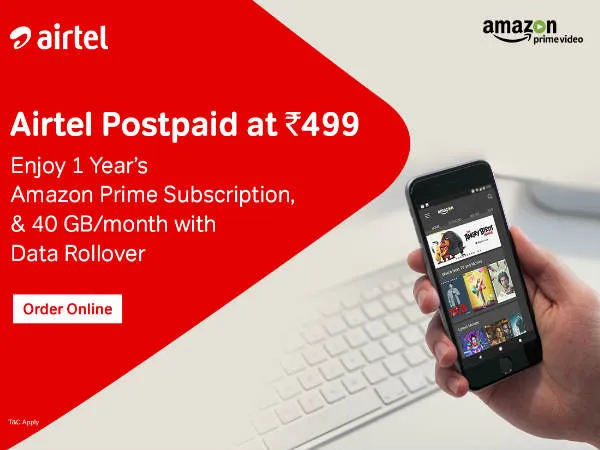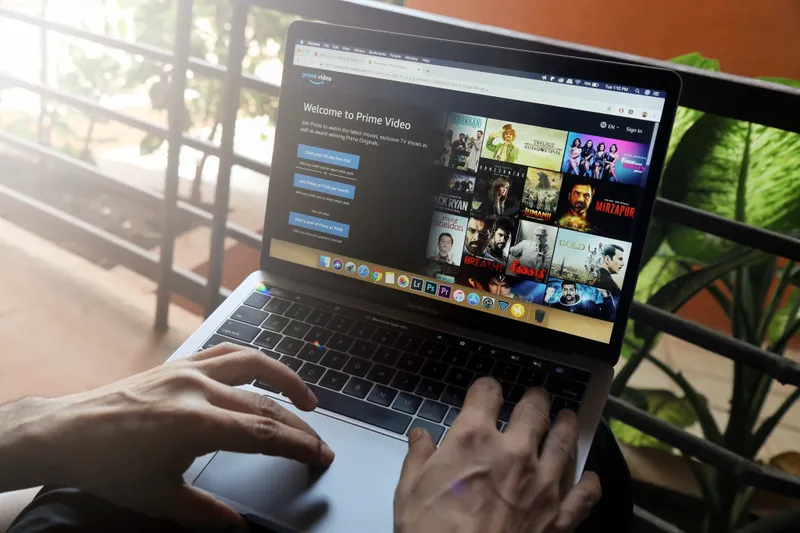How telco partnerships spurred the growth of Netflix, Amazon Prime Video, ALTBalaji, and others in India
In 2018, OTT services in India went mainstream. Much of the growth witnessed by Netflix, Amazon Prime Video, Eros Now, and others was due to content distribution tie-ups between them telecom operators and device manufacturers.
It’s one thing to own content, quite another to make it accessible. And, if content is not accessible, what really is its point? In the early days of satellite television in India, broadcasters had to forge distribution partnerships with local cable operators and pay them hefty “carriage fees” to make their content available to millions of TV households. Then came the DTH era, and the broadcaster-distributor partnership became slightly more formal, carriage fees were better structured, under-reporting reduced, ARPUs improved, and it was a win-win for both parties.
Enter OTT, or internet-led content services.
While the core game remains the same - because distribution continues to be critical for all content creators - the players have changed. The action has now shifted to video-streaming platforms such as Netflix, Amazon Prime Video, Hotstar, Eros Now, JioTV, and others. Distribution is what makes them reach the masses, be watched, heard, and talked about.

In 2018, partnerships between these OTT players and content distributors peaked. While paid global services like Netflix and Amazon Prime Video rode on the back of India’s expansive telecom infrastructure - one of the largest in the world - to establish their presence, telcos themselves had to bundle “content offerings” to woo their increasingly video-obsessed customers.
This not only led to an explosion in the country’s mobile data consumption, but also brought about a definitive change in users’ video-viewing habits, created a demand for original India-focused shows, and sowed the seeds of a robust “digital content ecosystem” which, BCG estimates, would be worth $5 billion in the next five years. And, rural India would play a big part in it.
Also Read: India leads the world in time spent on video-streaming apps, Netflix most downloaded paid app
In a post-Reliance Jio world…
It all started when Reliance Industries picked up a 25 percent stake in Balaji Telefilms in late 2017, and then put in place a content-sharing deal between Reliance Jio (the telco network) and ALTBalaji (the subscription-led OTT platform) in early 2018.
The partnership required ALTBalaji to make its original shows available on Jio Cinema and Jio TV, thus enabling free access of its content for Jio’s entire user base (160 million then, 280 million now). In one stroke, OTT content went mainstream.

Shortly after the Balaji deal, Mukesh Ambani-owned Reliance Industries turned its attention towards Eros Now, another homegrown OTT service floated by Eros International (traditional producer and distributor of movies).
RIL bought a 5 percent stake in Eros “to build and grow businesses around the content ecosystem”. Following the deal, Eros Now’s multi-language entertainment library was made available on Jio TV and Jio Cinema.
Even though Eros Now had been around for a while, this reach was unprecedented. In a conversation with YourStory, Rishika Lulla, CEO, Eros Digital, explained:
“We were the first ones to embrace digital back in 2012. We believed India had a digital entertainment story to tell and wanted to be at the forefront of it. But the infrastructure didn’t support us then. However, since 2016 [after Jio launched] with virtually free data being provided by telcos, a significant amount of consumption has happened.”
She added, “Telcos are playing an important role because of the connectivity they offer. They are crucial in the distribution aspect of things.”
Also read: Will India start paying for using platforms like Netflix, Hotstar, and Amazon Prime Video this year?
…others follow suit
With Jio fast building a content ecosystem and notching up insane consumption numbers - Jio subscribers used 864 crore GB of data primarily on video in the last three months of 2018 - incumbent telcos Airtel and Vodafone too had to buck up. Both went about stitching partnerships with OTT content providers from Netflix and Prime Video to Hotstar and Eros Now.

Airtel partnered with Amazon to offer one year’s worth of Amazon Prime membership to all Airtel Infinity Postpaid users. The offer could be activated through the Airtel TV app that already housed over 300 Live TV channels and 6,000 movies and shows. Airtel went on to extend these benefits to its V-Fiber Broadband customers, thus creating more opportunities for widespread consumption.
In a statement to the media, Vijay Subramaniam, Director, Content, Amazon Prime Video India, said,
“This exclusive offer enabled us to reach Airtel’s significant customer base [300-million plus] across the country, providing entertainment - anytime, anywhere on a reliable service, with great playback quality, and low data usage.”
Additionally, Airtel rolled out a bundled Netflix service for a limited period of three months to users with postpaid plans of Rs 649, Rs 799, and Rs 999. It also signed a strategic partnership with Star India-owned Hotstar to make its content available on the Airtel TV app. Airtel subscribers now have access to over 100,000 hours of Hotstar content across live sports, movies and television shows in nine languages. And all this, for free.
At the time of the deal, then-Hotstar CEO Ajit Mohan said,
“Airtel has among the widest consumer footprint in India and with our expansive content library, comprising rich programming that can cater across age groups, geographies, and interests, there are natural synergies and we are very excited about this partnership.”

Vodafone too started incentivising its RED postpaid users with two months’ worth of free Netflix subscription. A Rs 2,999 Vodafone postpaid plan earned users one full year of Netflix subscription (worth Rs 6,000). The telco also started bundling a year’s worth of Amazon Prime subscription for users with RED plans beginning from Rs 399. All offers could be activated using the Vodafone Play app, which incidentally, also houses content from Eros Now, ALTBalaji and Hooq.
“We find that our customers are increasingly seeking enriching and diverse content options. Through our partnership with HOOQ, Vodafone has further strengthened the base of quality content on Vodafone Play,” Dipankar Ghoshal, National Head – VAS and Content, Vodafone India, stated.
Vodafone reckons that a wide array of content offered through a single-access point, that is Vodafone Play, will reduce entry barriers and add to the convenience of users. It will also eliminate the need for users to download multiple OTT apps, thus aiding people with low storage devices.
Telcos are looking at OTT providers as an opportunity rather than a threat, according to a new research by Comarch.
Also read: To win over Indian audiences, OTT platforms need to understand the sensibilities of Bharat

Image: Picxy
That telco-OTT partnerships are the way to go was further established when state-owned BSNL announced last October that it would be offering its postpaid and broadband subscribers a one-year Amazon Prime subscription at no additional cost. Of course, it was BSNL’s attempt to take on rival operators Airtel, Vodafone, and Jio, but the compelling need for telcos to bundle content was abundantly clear.
Anupam Shrivastava, Chairman and MD, BSNL, explained,
“We understand the customer shift towards a highly networked digital ecosystem. Customers today demand freedom and flexibility in shopping and streaming content online. Our collaboration with Amazon provides them access to thousands of Indian and international movies, videos, TV shows, and music on the go.”
Also read: The rise of sports streaming in India, and how live cricket separates Hotstar from the rest
OEM-OTT partnerships
Meanwhile, OTT services are also taking a alternative route to increase adoption of their services, by being available “out of the box” on TV sets. Original equipment manufacturers (OEMs) from Xiaomi to LG are improving the accessibility and availability of OTT content.
In July 2018, Eros Now and Xiaomi Mi TV entered into a distribution partnership to offer an “immersive content experience” to viewers.
As part of the deal, Eros Now content is preloaded in PatchWall (an Android-based OS developed by Xiaomi for its smart TVs) on all Mi TVs sold in India, giving users access to a bouquet of 11,000-plus Bollywood and regional language films, entertainment shows, music videos and Eros Now Originals at a monthly subscription of Rs 49 (Plus Plan) and Rs 99 (Premium Plan).

Sudeep Sahu, Product Manager – MiTV, Xiaomi India, said in a statement,
“With our content-first philosophy, we hope to bring each Mi LED TV user a unique experience with a personalised interface. Mi LED TV offers over 500,000 hours of content and Eros Now is a very important partner who shares similar brand philosophies as Xiaomi in terms of disrupting industries.”
Prior to this, Eros Now had also tied up with LG to make its content available on webOS-enabled LG smart TVs worldwide. “This partnership provides millions of LG smart TV users with unlimited access to Eros Now’s vast library of premium content, as well as a seamless viewing experience for Eros Now users, which furthers our vision of being platform-agnostic,” Eros stated.
There’s also Samsung offering Galaxy S9 and S9+ users (with a Vodafone postpaid connection) a year’s worth of Netflix subscription.
According to Counterpoint Research,
“The target for OEMs should be to create bundle offers with operators and finance providers to gain long-term access to the digital life of customers. Programmes like small credit loans with postpaid operation services and monthly additional OTT packages may work well.”
India’s OTT market is nascent still, but the growth potential is enormous. And, in no uncertain terms, distribution is driving that growth.
Also read: Meet Hoichoi, a regional language OTT platform that is redefining innovation
Read more from our four-part series on how Indians are getting hooked to streaming videos online.
Will India start paying for using platforms like Netflix, Hotstar, and Amazon Prime Video this year?
To win over Indian audiences, OTT platforms need to understand the sensibilities of Bharat







